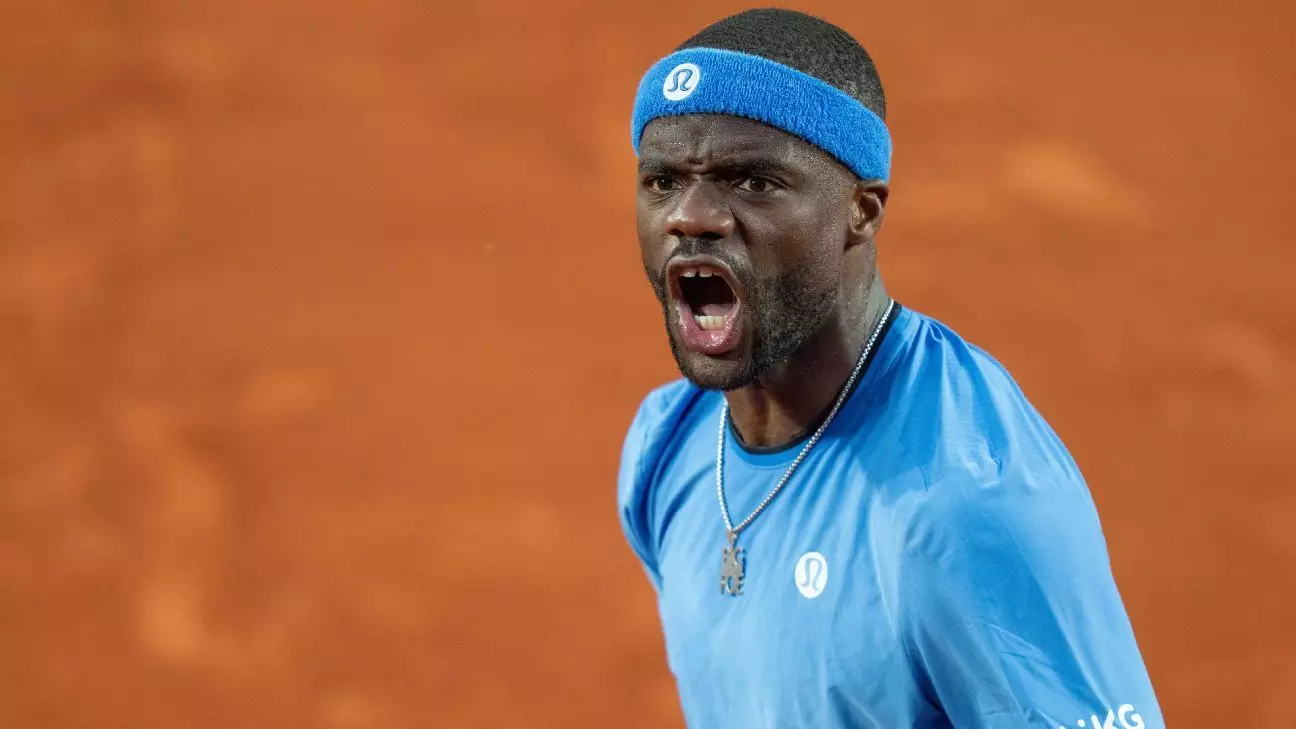Frances Tiafoe’s journey to the quarterfinals of the French Open epitomizes the unpredictable nature of professional tennis. Initially met with skepticism about his own potential on clay, Tiafoe voiced his skepticism about the red dirt surface at Roland-Garros. “Last tournament on clay, which I get really excited about,” he stated, hinting at his eagerness to transition to more favorable playing conditions — specifically grass and summer hard courts, where his explosive style thrives. This initial indifference, however, has swiftly transformed into triumph as he now finds himself on the brink of a monumental achievement.
His powerful ascent through the tournament has not only been a personal victory but also a significant moment for American tennis. The last time multiple American men reached this stage in Paris was in 1996, highlighting the rarity of Tiafoe’s accomplishment. This context serves to enhance the weight of his performance; he is stepping onto history’s stage, and his early doubts about clay are now overshadowed by the promise of what lies ahead.
The Evolution of Tiafoe’s Game
One noteworthy aspect of Tiafoe’s evolution as a player is his newfound capability to navigate the slower pace of clay courts. Historically, his game has been defined by aggressive strokes and quick points, making it difficult for him to adapt to surfaces that necessitate a more measured approach. As he candidly admitted, his challenge has always been maintaining patience on the slower clay surface, where his well-known big-hitting game can feel stifled.
Yet, this year’s performance demonstrates a remarkable shift in mentality. Tiafoe has strategically evolved his game to embrace the nuances of clay. This transition suggests not only growth as an athlete but also speaks to his resilience and adaptability — qualities that are critical in high-stakes competitions. His impressive run has been punctuated by a series of straight-set victories, a clear indicator of his comfort level on the court despite his earlier reservations.
The Bigger Picture: American Tennis Resurgence
While Tiafoe’s individual achievements are intriguing, they also raise important questions about the broader landscape of American tennis. With multiple American men advancing past the early rounds of a Grand Slam for the first time in decades, signs of a resurgence appear promising. As he prepares to take on formidable opponents such as Lorenzo Musetti or Holger Rune, Tiafoe carries with him the hopes and expectations of a nation eager for competitive brilliance on the international stage.
Moreover, the emergence of Tiafoe and his compatriots — including Tommy Paul — in this tournament may signify a pivotal moment in U.S. tennis history. The sport has been searching for rising stars capable of carrying the legacy forward, and perhaps this youthful energy will rekindle the fervor of American audiences that has waned over the years.
Personal Drive and Motivation
One of Tiafoe’s most compelling attributes is his mentality; he thrives under pressure. His self-proclamation that being “backed up against it” brings out his best tennis reveals a mindset that shifts from complacency to fierce determination when stakes are high. This introspection not only resonates with fans but serves as a reminder of the psychological battles athletes face away from the physical demands of the sport. Tiafoe’s optimism about his capabilities — “I can go for a run” — underscores an underlying belief in his talent that seems to flourish amid challenging circumstances.
As he approaches his next match, the expectation is that Tiafoe will continue to harness this mindset, potentially leading to an unprecedented finish at the French Open. His fearless approach and infectious personality bring a refreshing vibrancy to a sport often viewed through the lens of traditional icons.
Overall, Frances Tiafoe’s journey in this French Open eloquently conveys the narrative of transformation, both at a personal level and within the context of American tennis. Whether or not he claims the ultimate prize, his ascent signifies a promising trajectory for the sport and generates optimism for its future.

